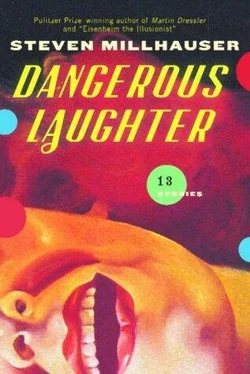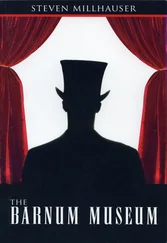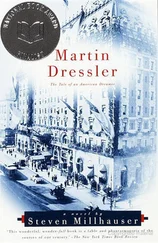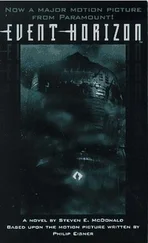We do know, from records discovered in 1954, that Crane studied drawing in his early twenties at Cooper Union and the National Academy of Design (1866–68). His first illustrations for Harper’s Weekly— “Selling Hot Corn,” “The Street Sweeper,” “Fire Engine at the Bowery Theater,” “Unloading Flour at Coenties Slip”—date from 1869; the engravings are entirely conventional, without any hint of what was to come. It is of course possible that the original drawings (since lost) contained subtleties of line and tone not captured by the crude wood engravings of the day, but unfortunately nothing remains except the hastily executed and poorly printed woodcuts themselves. There is evidence, in the correspondence of friends, to suggest that Crane became interested in photography at this time. In the summer of 1870 or 1871 he set up against one wall of his walk-up studio a long table that became a kind of laboratory, where he is known to have conducted experiments on the properties of paint. During this period he also worked on a number of small inventions: a doll with a mechanical beating heart; an adaptation of the kaleidoscope that he called the Phantasmatrope, in which the turning cylinder contained a strip of colored sequential drawings that gave the illusion of a ceaselessly repeated motion (a boy tossing up and catching a blue ball, a girl in a red dress skipping rope); and a machine that he called the Vivograph, intended to help amateurs draw perfect still lifes every time by the simple manipulation of fourteen knobs and levers. As it turned out, the Vivograph produced drawings that resembled the scrawls of an angry child, the Phantasmatrope, though patented, was never put on the market because of a defect in the shutter mechanism that was essential for masking each phase of motion, and the beating hearts of his dolls kept suddenly dying. At about this time he began to paint in oils and to take up with several artists who later became part of the Verisimilist movement. In 1873 he is known to have worked on a group of paintings clearly influenced by his photographic studies: the Photographic Print Series, which consisted of several blank canvases that were said to fill gradually with painted scenes. By the age of thirty, Harlan Crane seems to have settled into the career of a diligent and negligible magazine illustrator, while in his spare time he painted in oils, printed photographs on albumen paper, and performed chemical experiments on his laboratory table, but the overwhelming impression he gives is one of restlessness, of not knowing what it is, exactly, that he wants to do with his life.
Crane first drew attention in 1874, when he showed four paintings at the Verisimilist Exhibition held in an abandoned warehouse on the East River. The Verisimilists (Linton Burgis, Thomas E. Avery, Walter Henry Hart, W. C. Curtis, Octavius Ward, and Arthur Romney Ropes) were a group of young painters who celebrated the precision of photography and rejected all effects of a dreamy, suggestive, or symbolic kind. In this there was nothing new; what set them apart from other realist schools was their fanatically meticulous concern for minuscule detail. In a Verisimilist canvas it was possible to distinguish every chain stitch on an embroidered satin fan, every curling grain in an open package of Caporal tobacco, every colored kernel and strand of silk on an ear of Indian corn hanging from a slanted nail on the cracked and weatherworn door of a barn. But their special delight was in details so marvelously minute that they could be seen only with the aid of a magnifying glass. Through the lens the viewer would discover hidden minutiae — the legs of a tiny white spider half hidden in the velvet folds of a curtain, a few bread crumbs lying in the shadow cast by a china plate’s rim. Arthur Romney Ropes claimed that his work could not be appreciated without such a glass, which he distributed free of charge to visitors at his studio. Although the Verisimilists tended to favor the still life (a briarwood pipe lying on its side next to three burnt matches, one of which was broken, and a folded newspaper with readable print; a slightly uneven stack of lovingly rendered silver coins rising up beside a wad of folded five-dollar bills and a pair of reading glasses lying on three loose playing cards), they ventured occasionally into the realm of the portrait and the landscape, where they painstakingly painted every individual hair in a gentleman’s beard or a lady’s muff, every lobe and branching vein on every leaf of every sycamore and oak. The newspaper reviews of the exhibition commended the paintings for illusionistic effects of a remarkable kind, while agreeing that as works of art they had been harmed by the baleful influence of photography, but the four works (no longer extant) of Harlan Crane seemed to interest or irritate them in a new way.
From half a dozen newspaper reports, from a letter by Linton Burgis to his sister, and from a handful of scattered entries in journals and diaries, we can reconstruct the paintings sufficiently to understand the perplexing impressions they caused, though many details remain unrecoverable.
Still Life with Fly appears to have been a conventional painting of a dish of fruit on a table: three apples, a yellow pear, and a bunch of red grapes in a bronze dish with repoussé rim, beside which lay a woman’s slender tan-colored kid glove with one slightly curling fingertip and a scattering of envelopes with sharply rendered stamps and postmarks. On the side of one of the red-and-green apples rested a beautifully precise fly. Again and again we hear of the shimmering greenish wings, the six legs with distinct femurs, tibias, and tarsi, each with its prickly hairs, the brick-red compound eyes. Viewers agreed that the lifelike fly, with its licorice-colored abdomen showing through the silken transparence of the wings, was the triumph of the composition; what bewildered several observers was the moment when the fly darted suddenly through the paint and landed on an apple two inches away. The entire flight was said to last no more than half a second. Two newspapers deny any movement whatever, and it remains uncertain whether the fly returned to its original apple during visiting hours, but the movement of the painted fly from apple to apple was witnessed by more than one viewer over the course of the next three weeks and is described tantalizingly in a letter of Linton Burgis to his sister Emily as “a very pretty simulacrum of flight.”
Waves appears to have been a conventional seascape, probably sketched during a brief trip to the southern shore of Long Island in the autumn of 1873. It showed a long line of waves breaking unevenly on a sandy shore beneath a melancholy sky. What drew the attention of viewers was an unusual effect: the waves could be clearly seen to fall, move up along the shore, and withdraw — an eerily silent, living image of relentlessly falling waves, under a cheerless evening sky.
The third painting, Pygmalion, showed the sculptor in Greek costume standing back with an expression of wonderment as he clutched his chisel and stared at the beautiful marble statue. Observers reported that, as they looked at the painting, the statue turned her head slowly to one side, moved her wrists, and breathed in a way that caused her naked breasts to rise and fall, before she returned to the immobility of paint.
The Séance showed eight people and a medium seated in a circle of wooden chairs, in a darkened room illuminated only by candles. The medium was a stern woman with heavy-lidded eyes, a fringed shawl covering her upper arms, and tendrils of dark hair on her forehead. Rings glittered on her plump fingers. As the viewer observed the painting, the eight faces gradually turned upward, and a dim form could be seen hovering in the darkness of the room, above or behind the head of the medium.
Читать дальше












